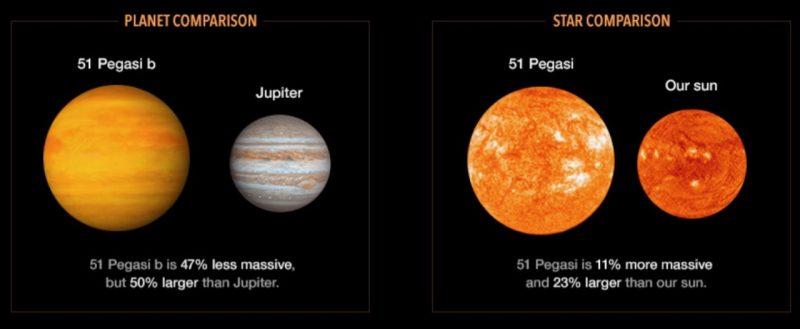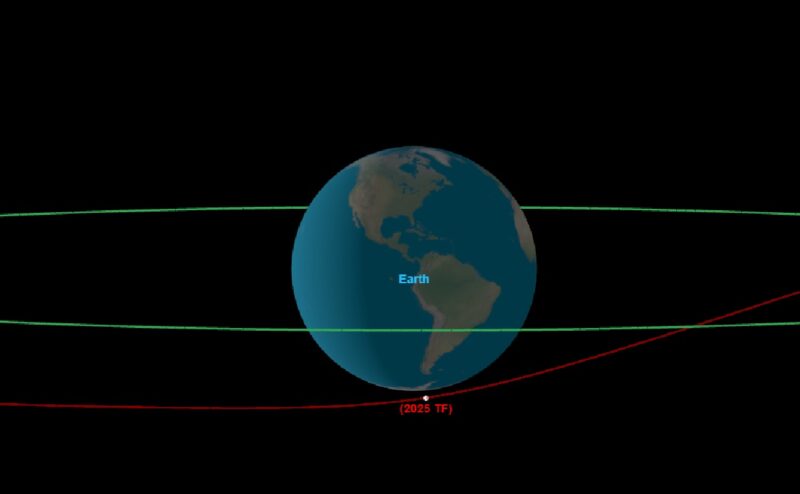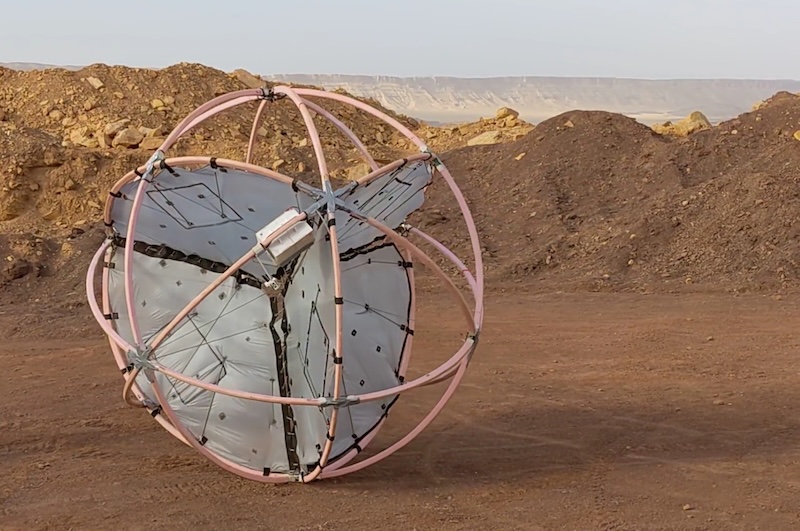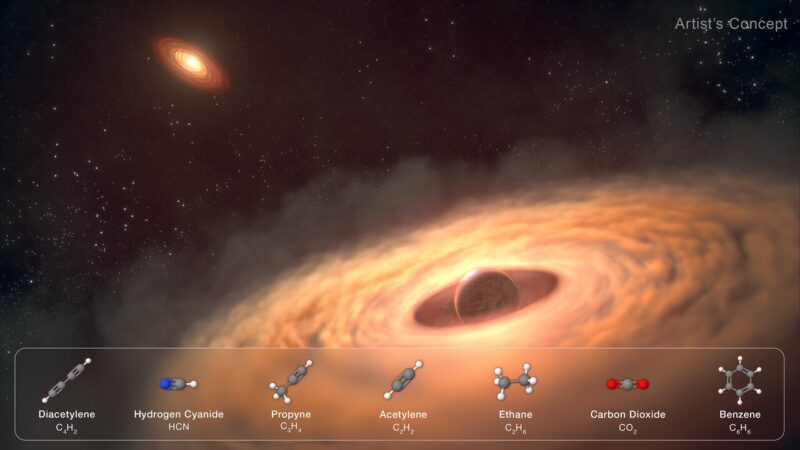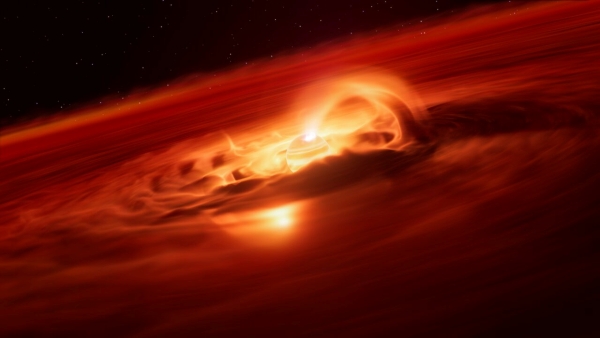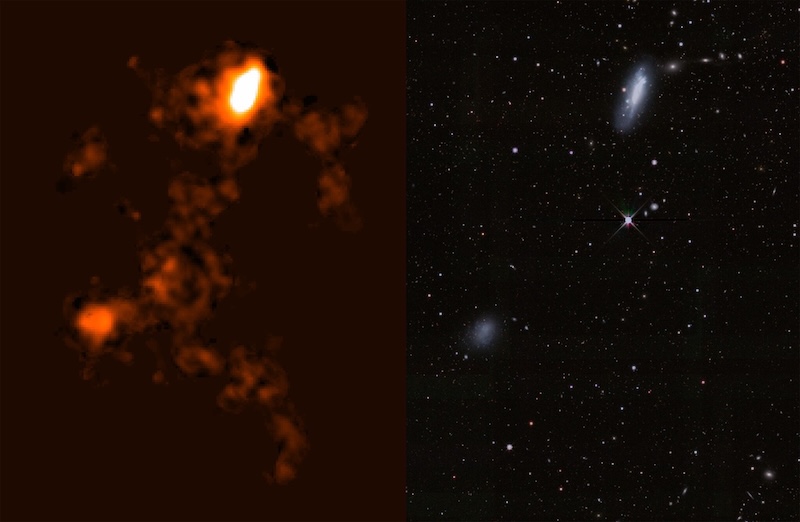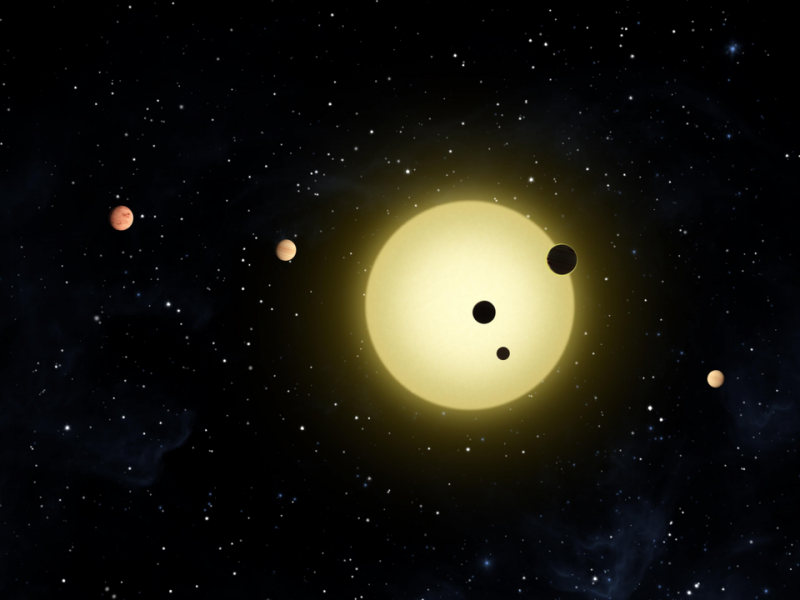Ridhima Nunhokee, of the Curtin Institute of Radio Astronomy in Australia, gives a brief overview of her team’s discovery that the early universe was warmer than expected during the Epoch
EarthSky7- Page
Astronomers discovered the 1st planet orbiting a sunlike star in 1995. Here is a comparison showing an artists’ concept of 51 Pegasi b to Jupiter and 51 Pegasi to the
An asteroid with the name 2025 TF passed Earth not far above Antarctica at 7:49 p.m. CDT on September 30, 2025. Then, around 2:02 p.m. CDT on October 2, 2025,
View larger. | Prototype of a Tumbleweed rover nicknamed Pink Lady, in the Negev desert in Israel. Swarms of Tumbleweed rovers could explore large areas of Mars, using only the
Artist’s concept of a moon-forming disk of dust and gas encircling the young exoplanet, CT Cha b, 625 light-years from Earth. Data from the James Webb Space Telescope suggest the
Artist’s illustration of the rogue planet Cha 1107-7626, which astronomers have spotted eating up gas and dust at a record rate of 6 billion tons a second. Image via ESO/
Artist’s concept of auroras on rogue planet SIMP 0136. The auroras are near the north pole, similar to Earth’s northern lights. Image via Dr. Evert Nasedkin/ Trinity College Dublin. SIMP
The World Space Week Association (WSWA) official poster for World Space Week 2025, celebrated October 4–10 under the theme Living in Space. Image via WSWA. World Space Week dates back
This video, provided by the International Center for Radio Astronomy Research (ICRAR), features the lead investigator of this study, Lister Staveley-Smith of the University of Western Australia. He provides an
Exoplanets are worlds orbiting distant stars. Astronomer Néstor Espinoza of Space Telescope Science Institute spoke with EarthSky’s Deborah Byrd in May 2024, about this diversity of worlds beyond our sun
-
 012024 in Review: Highlights from NASA in Silicon Valley
012024 in Review: Highlights from NASA in Silicon Valley -
 02Panasonic Leica Summilux DG 15mm f/1.7 ASPH review
02Panasonic Leica Summilux DG 15mm f/1.7 ASPH review -
 03From Polymerization-Enabled Folding and Assembly to Chemical Evolution: Key Processes for Emergence of Functional Polymers in the Origin of Life
03From Polymerization-Enabled Folding and Assembly to Chemical Evolution: Key Processes for Emergence of Functional Polymers in the Origin of Life -
 04How New NASA, India Earth Satellite NISAR Will See Earth
04How New NASA, India Earth Satellite NISAR Will See Earth -
 05And Thus Begins A New Year For Life On Earth
05And Thus Begins A New Year For Life On Earth -
 06Astronomy Activation Ambassadors: A New Era
06Astronomy Activation Ambassadors: A New Era -
07SpaceX launch surge helps set new global launch record in 2024



